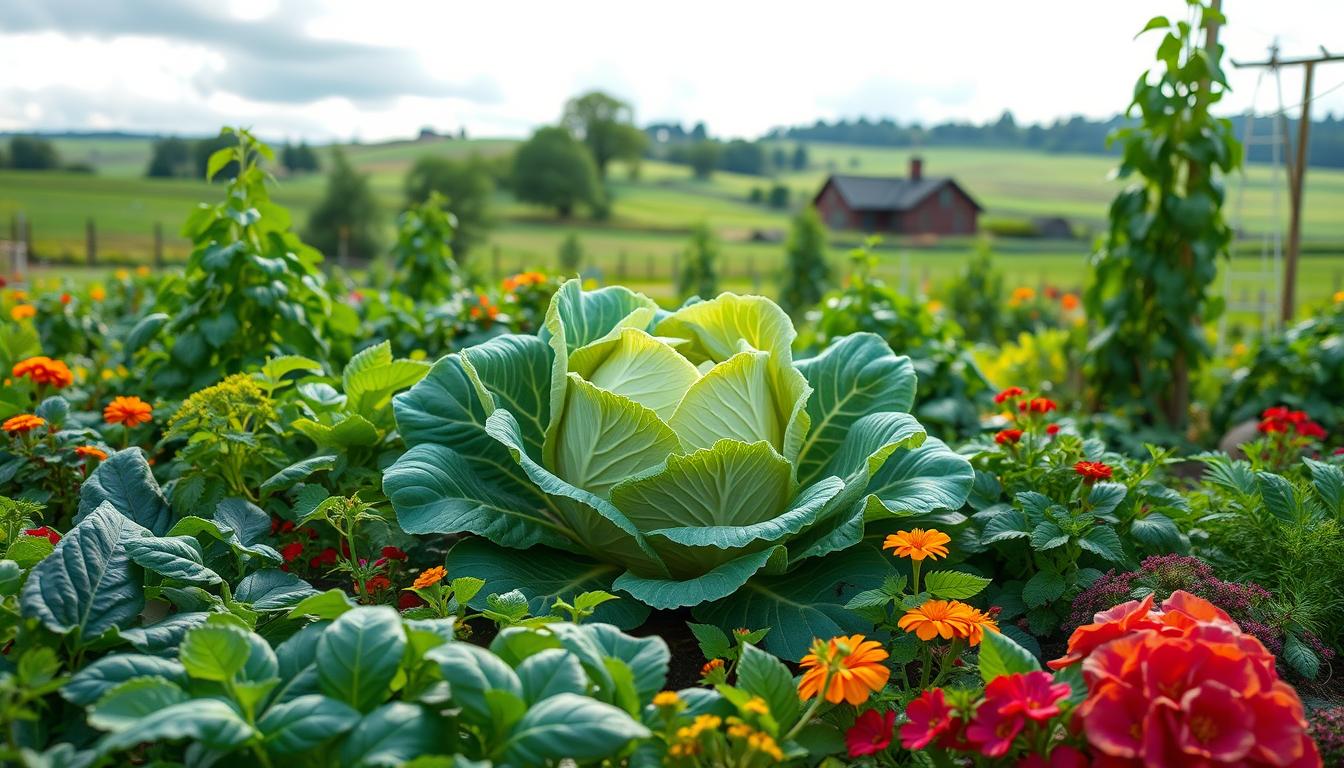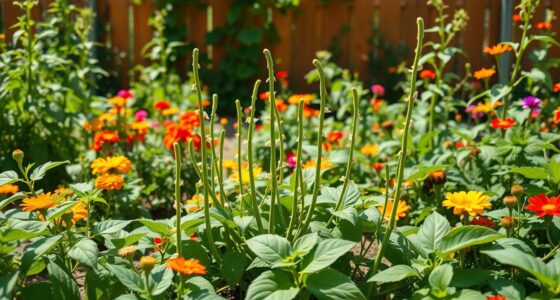Imagine stepping into your garden, where the air is filled with the earthy scent of soil, and the vibrant greens of your plants dance gently in the breeze. As a gardener, you have the unique ability to create not just a patch of vegetables, but a thriving ecosystem. Cabbage, with its rich texture and hearty leaves, can be a centerpiece of this vibrant space when paired with the right companions. Understanding the role of cabbage companion plants is essential for nurturing robust growth and resilience against pests. By exploring the best companions for cabbage, you’ll uncover how companion planting with cabbage can elevate your gardening experience, resulting in healthier plants and a bountiful harvest.
Key Takeaways
- Companion planting enhances growth and pest resistance for cabbage.
- Choosing the best companions for cabbage can improve flavor and health.
- Cabbage thrives alongside specific herbs, flowers, and other vegetables.
- Planning your garden layout is crucial for maximizing space and benefits.
- Healthy soil and environmental considerations are key to thriving cabbage plants.
What Are Cabbage Companion Plants?
Cabbage companion plants refer to those compatible species that provide mutual benefits when grown alongside cabbage. Understanding the companion planting definition is essential for any gardener looking to enhance their crop yields and resilience against pests. For instance, certain plants can not only coexist with cabbage but also contribute positively to its health.
Definition and Importance
The term “cabbage companion plants” encompasses various species that support each other’s growth and defense mechanisms. When you plant compatible crops together, they create a balanced ecosystem in your garden. This practice not only boosts the vitality of your cabbage but also makes it less susceptible to common garden pests. For example, planting carrots in close proximity to cabbage can ensure both crops efficiently share sunlight and water resources without competition.
Benefits of Companion Planting
Practicing companion planting offers numerous advantages. One of the primary benefits of companion planting is pest deterrence. Certain plants can emit scents that confuse or repel harmful insects, providing a natural form of protection. Additionally, these plants can enhance soil fertility through nitrogen fixation, promoting healthier cabbage growth. You will find that gardening becomes easier and more productive as companion plants help suppress weeds and reduce maintenance tasks. Research consistently shows that gardens incorporating these strategies produce more robust plants and more abundant harvests.
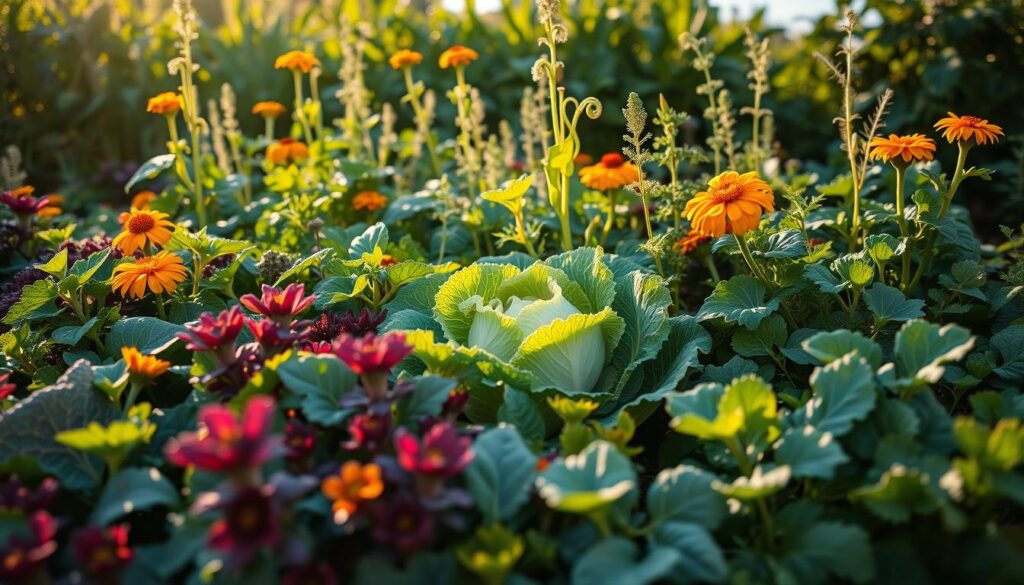
Top Companion Plants for Cabbage
When considering the best companions for your cabbage, the focus should be on integrating plants that not only support growth but also enhance soil health and deter pests. Selecting the right organic companion plants for cabbage can significantly improve your garden’s productivity and sustainability.
Herbs That Help Cabbage Thrive
Incorporating herbs for cabbage is one of the most effective strategies for promoting healthy growth. Dill, thyme, and chamomile are standout choices. Dill attracts beneficial insects like ladybugs that predate on common pests, such as aphids. Chamomile enriches the soil, providing essential nutrients that cabbage plants need to flourish.
Flowers That Attract Beneficial Insects
Flowers like yarrow and marigold play an important role in the ecosystem of your garden. Yarrow attracts parasitic wasps, which help control pest populations threatening your cabbage. Marigolds are known for their ability to repel harmful insects, turning them into vital allies in your gardening efforts.
Vegetables to Plant with Cabbage
Certain vegetables make excellent companions for cabbage. Carrots and beets thrive under similar growing conditions, sharing the same cool temperatures without competing heavily for nutrients. Planting cabbage with companions like these creates a biodiverse environment, enriching the overall health of your garden.
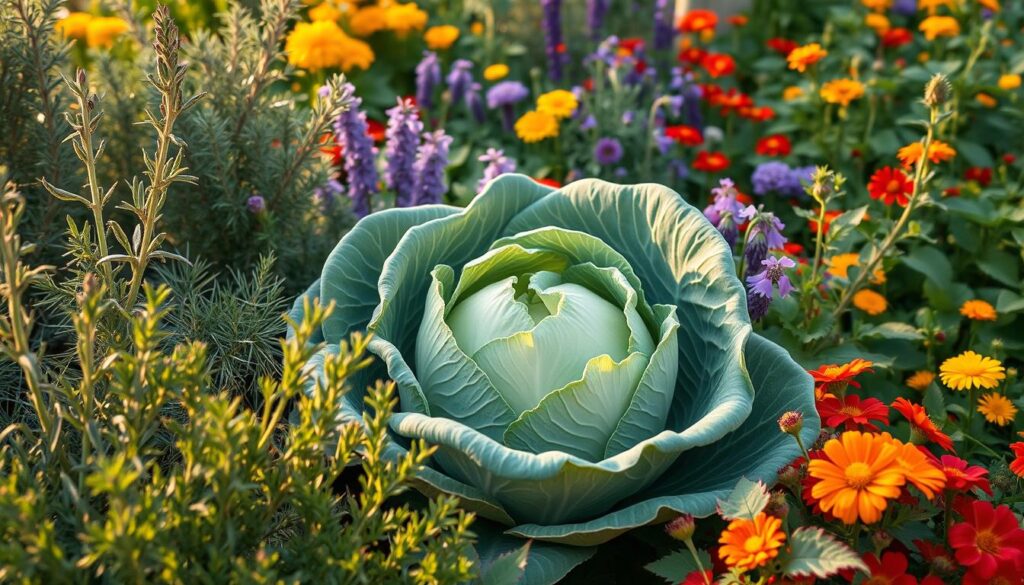
Avoiding Bad Companions
When planning your cabbage garden, it’s essential to recognize the bad companions for cabbage. Some plants simply do not enhance the growth of cabbage, and understanding which ones to avoid can lead to more robust and healthier crops. Here are certain plants to keep away from your cabbage to ensure optimal growth.
Plants to Keep Away from Cabbage
Several plants may hinder the progress of cabbage. You should consider steering clear of those that compete for space or attract pests. The following list highlights the primary 5 plants to avoid:
- Tomatoes
- Pole beans
- Squash (gourds)
- Strawberries
- Cucumbers
In each case, these plants can overshadow cabbage or create an environment conducive to pests, thus impeding growth and development.
Potential Pests and Diseases
In addition to avoiding specific plants, vigilance against pests and diseases is crucial in maintaining a healthy cabbage crop. Common cabbage pests include:
- Cabbage worms
- Aphids
- Slugs
Monitoring for these cabbage pests and taking preemptive measures can save your crop. Furthermore, certain diseases, like black rot, are significant threats. Ensuring proper care and attention to these factors can bolster your cabbage plants against these challenges.
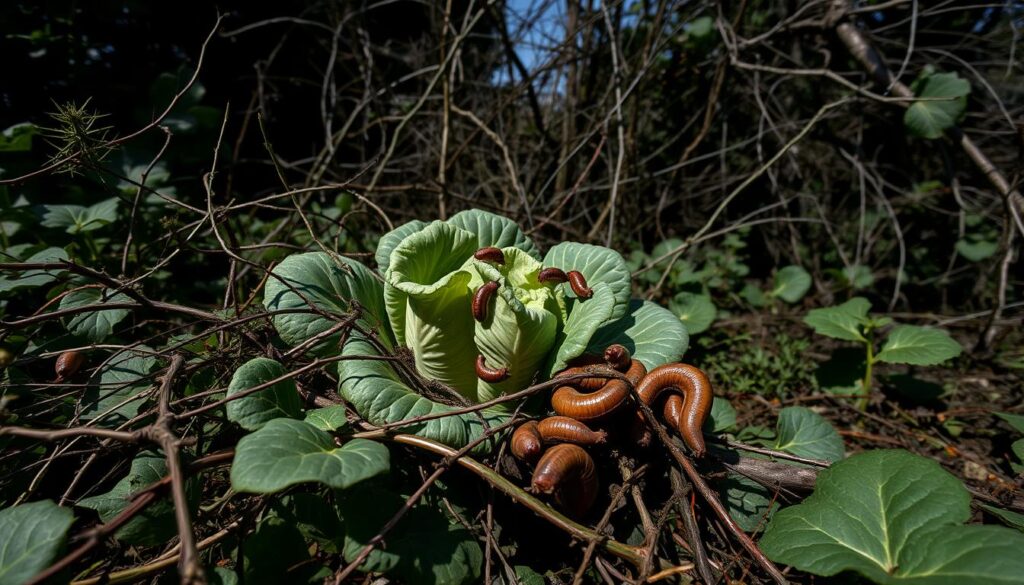
How to Plan Your Garden Layout
Creating an effective garden layout for cabbage involves thoughtful planning that considers both companion plants and available space. Visualizing plant arrangements through sketches or digital planners helps you strategically place each vegetable, herb, and flower, ensuring optimal growth conditions for all species involved.
Visualizing Companion Plant Arrangements
This step is crucial in understanding how different plants interact with each other. By visualizing plant arrangements, you can ensure that larger plants do not overshadow smaller ones, while also creating a harmonious environment that promotes mutual benefits. Take into account the height and spread of each plant when drafting your layout.
Optimizing Space in Your Garden
Maximizing garden layout efficiency is key to a successful yield. Utilize vertical gardening techniques by using trellises for climbing plants, which frees up ground space. Consider incorporating intercropping methods, where a combination of plants are grown together to optimize the use of nutrients and water. For example, you might pair cabbage with fast-growing species that can be harvested earlier. Implementing mulching techniques helps retain soil moisture and suppress weeds, promoting healthier plants. Below is a simple guide to help you structure your garden effectively:
| Plant Type | Ideal Position | Companion Plant Suggestions |
|---|---|---|
| Cabbage | Mid-garden, with space around | Herbs like thyme and marigold |
| Tomatoes | North side for indirect sunlight | Basil and parsley |
| Nasturtiums | Edges to cover bare soil | Olive beetle repellent |
| Peppers | West side for full sun | Onions to deter pests |

Benefits of Growing Together
Partnering plants in your garden can yield numerous advantages, especially when it comes to cabbage cultivation. From enhancing soil nutrient cycling to pest management, selecting the right companions can dramatically impact your gardening success. This section explores the benefits of growing cabbage alongside compatible plants.
Nutrient Optimization
Companion plants can play a significant role in nutrient optimization. For instance, legumes introduce nitrogen into the soil, crucial for the healthy growth of cabbage. Using plants like clover can assist in improving soil fertility and structure. These additions not only benefit the cabbage but also create an ecosystem that supports overall plant health. With the right companions, you can enhance nutrient availability and boost your plants’ growth potential.
Pest Control Strategies
Integrating specific companion plants offers effective pest control strategies. Strongly-scented herbs, such as garlic, along with vibrant flowers like marigolds, help deter potential pests from your cabbage. Plants like yarrow serve a dual purpose by attracting beneficial insects that prey on garden pests. This natural approach to organic pest management allows you to maintain a healthier garden environment while minimizing chemical interventions.
Improved Flavor and Growth Rate
The synergy created by carefully selected companion plants can lead to improved flavor profiles in your cabbage. Research shows that healthier plant ecosystems contribute to more flavorful and robust crops. In addition, the interplay between compatible plants can lead to enhanced growth rates for cabbage, equipping them to better withstand environmental stresses and providing you with superior harvests.
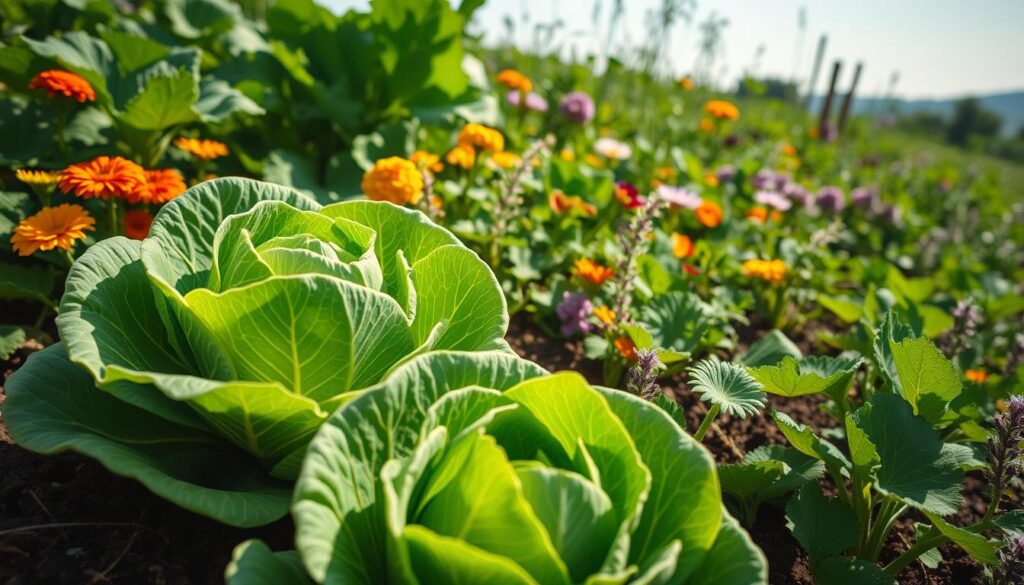
| Benefit | Details |
|---|---|
| Nutrient Optimization | Legumes fix nitrogen, enhancing soil fertility. |
| Pest Control | Herbs and flowers deter pests naturally. |
| Flavor Enhancement | Synergistic effects improve taste and growth rates. |
Soil and Environmental Considerations
When cultivating cabbage, understanding the soil and climate conditions is vital for achieving healthy plants. Cabbage thrives in particular soil conditions that enhance its growth and flavor. Familiarizing yourself with the ideal soil types will help in creating the optimal environment for your cabbage and its companion plants.
Ideal Soil Conditions for Cabbage
Cabbage flourishes in well-drained, loamy soil enriched with organic matter. Ideal soil types typically possess a balanced structure that supports moisture retention while allowing excess water to escape. Maintaining a pH range of 6.0 to 7.0 will facilitate nutrient absorption. To create favorable soil conditions for cabbage, consider amending your soil with compost before planting, as this can enhance fertility and provide a robust growing foundation.
Climate Preferences for Companion Plants
Understanding the climate needs for cabbage is critical. Cabbage thrives best in cooler temperatures, generally ranging from 45°F to 75°F. Choosing companion plants that align with these climate conditions can create a harmonious growing environment. Many compatible companions, such as spinach and beets, are resilient to light frost, making them excellent partners. By carefully selecting plants that share similar climate suitability, you can ensure a thriving garden.
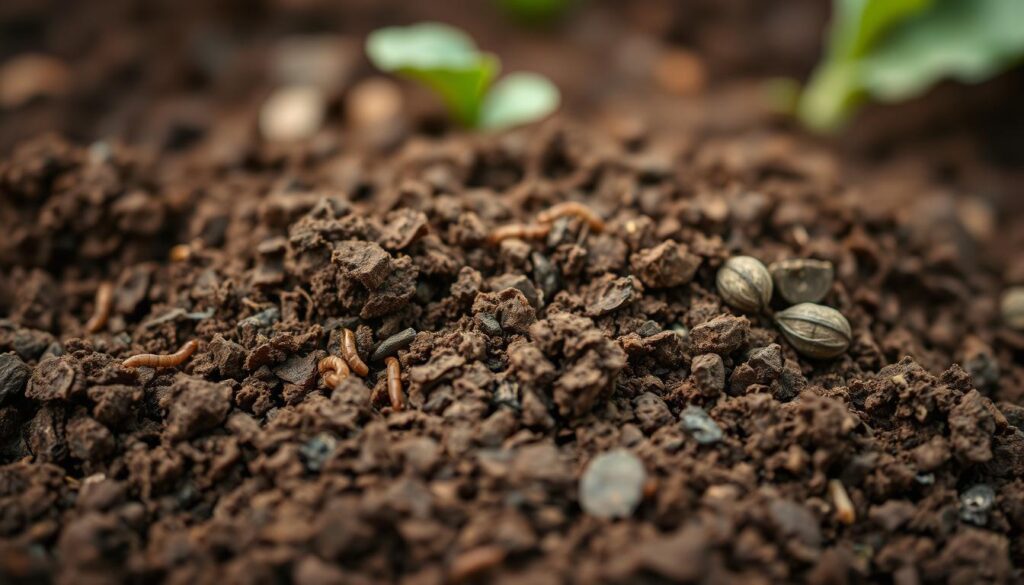
How to Care for Cabbage and Its Companions
Caring for cabbage and its companions goes beyond just planting them together. You need to pay close attention to their watering needs and nutrition to ensure a vibrant crop. Consistent moisture is vital, especially during the growing season. Implementing proper irrigation for companion plants can aid in achieving that balance and promoting healthy growth.
Watering Needs for Cabbage and Companions
Cabbage thrives with adequate moisture levels. Maintaining consistent soil moisture without causing waterlogging is key to preventing issues such as root rot. Consider using drip irrigation or soaker hoses for a gentle, even distribution of water. This approach not only meets the watering needs for cabbage but also ensures that companion plants receive sufficient hydration.
Fertilization Tips for Your Garden
Regular fertilization plays a significant role in fostering healthy cabbage plants. Use organic options like compost or fish emulsion to enhance soil nutrition for companion plantings. Monitoring nutrient levels through simple soil tests can help you adjust your fertilization strategy as necessary, promoting a thriving garden ecosystem while boosting cabbage yields.

Seasonal Planting Tips
Understanding the best times for seasonal planting for cabbage is crucial for achieving optimal growth. You should consider a planting schedule that aligns with your local climate. Generally, early spring or late summer presents the perfect opportunity for sowing cabbage seeds. This timing allows your cabbage to thrive in cooler weather, which it prefers. You would want to check local frost dates to avoid planting too early or too late. Additionally, planting companion plants like radishes can help fill gaps in your garden and benefit from the same seasonal planting conditions.
Best Times to Plant Cabbage and Companions
To create a successful planting schedule, take note of the following:
- Spring planting should occur 2-4 weeks before the last frost.
- For fall crops, sow seeds 8–10 weeks before the first expected frost.
- Consider using a planting calendar specific to your region for enhanced accuracy.
Rotating Crops for Better Yields
Implementing crop rotation strategies significantly improves cabbage yields over time. By rotating cabbage and its companions with other crop families each growing season, you can minimize the risk of diseases and pest problems. This practice not only promotes a healthier garden but also enhances soil nutrients. With a well-planned approach, you can create a sustainable gardening environment that encourages robust vegetable production.
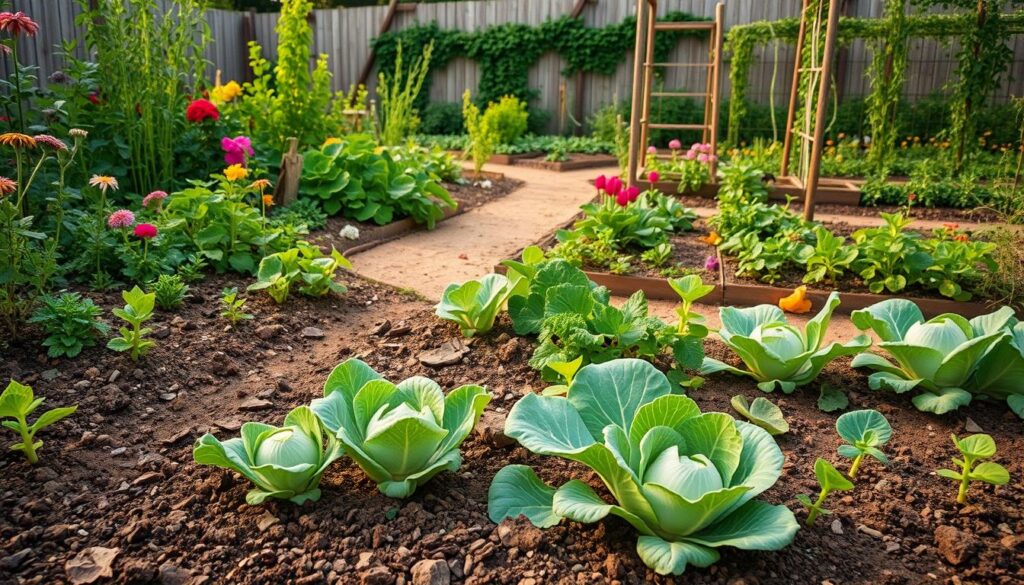
Popular Cabbage Varieties
Understanding the different cabbage varieties is essential for maximizing flavor and yield. Varieties like green, red, and savoy cabbages each offer unique characteristics, making them suitable for various culinary applications. When selecting the best varieties for companions, consider how these cabbages thrive alongside herbs and other plants.
Varieties That Pair Well with Companions
Cabbage varieties flourish when paired with the right companions. Here are some excellent pairings:
- Green Cabbage: Complements garlic, which helps deter common pests.
- Red Cabbage: Grows well with thyme, enhancing flavor through natural pest control.
- Savoy Cabbage: Benefits from nearby planting with marigolds, which attract beneficial insects.
Growing Considerations for Each Variety
When planning your garden, pay attention to the specific needs of your cabbage varieties. Each type has its own growing tips:
- Green Cabbage: Requires full sun and consistent watering for optimal growth.
- Red Cabbage: Thrives in nutrient-rich soil and benefits from regular fertilization.
- Savoy Cabbage: Prefers some shade, especially in hotter climates, and may need extra attention during hot spells.
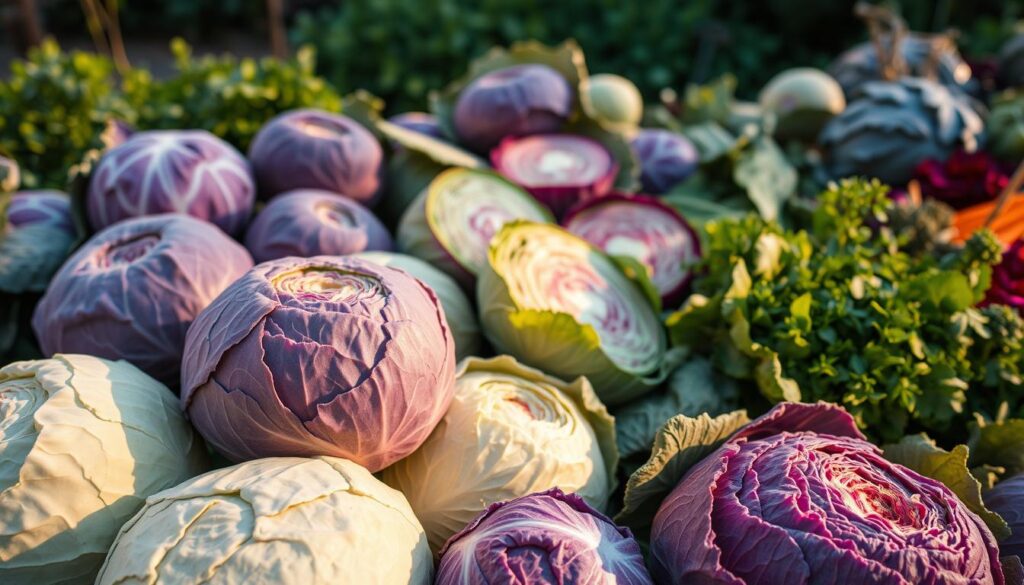
Pests and Diseases to Watch For
Growing cabbage can be rewarding, yet you may encounter various garden challenges along the way. Being aware of common cabbage pests will help you take proactive measures to protect your crop. These pests can detract from the overall health and yield of your garden. Let’s explore some of the most prevalent threats and effective management strategies.
Common Cabbage Pests
Aphids, cabbage worms, and slugs are notorious for targeting cabbage and can lead to significant damage if not addressed. Regularly checking your plants for warning signs, such as holes in the leaves or a sticky residue, will allow you to mitigate the impact of these common garden pests. Introducing companion plants can enhance natural defenses and deter these unwanted visitors.
Natural Remedies and Prevention
Implementing organic methods for pest prevention for cabbage is essential for maintaining a healthy garden. Utilizing neem oil or insecticidal soap can effectively control pests while safeguarding beneficial insects. Companion plants, including marigold and garlic, serve as natural repellents, creating an additional layer of defense against key cabbage pests.
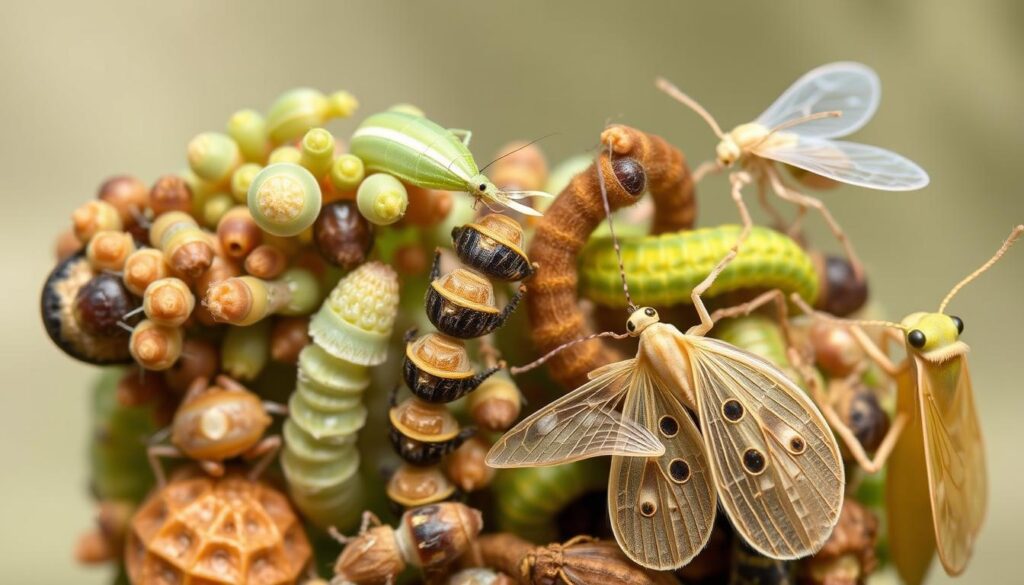
Harvesting Cabbage and Companions
Knowing the right time for harvesting cabbage and its companions is essential for enjoying their full flavor and nutritional benefits. Watch for specific signs of readiness to ensure you’re picking at the right moment.
Indicators That It’s Time to Harvest
Cabbage typically reaches maturity between 70 to 80 days after planting. To determine if your cabbage is ready for harvesting, check if the head feels firm when pressed. The leaves should be tightly wrapped around the head. Regularly monitoring growth provides valuable feedback as you observe these key signs of readiness.
Tips for Easy Harvesting
Your harvesting technique can make a difference in maintaining quality. When harvesting cabbage, use a sharp knife to cut the head from the stalk, being cautious not to disturb the roots. Leaving the roots intact allows for potential regrowth. Aim to harvest early in the morning or late afternoon to preserve freshness and quality. These efficient harvesting methods will enhance your experience and yield healthy produce.
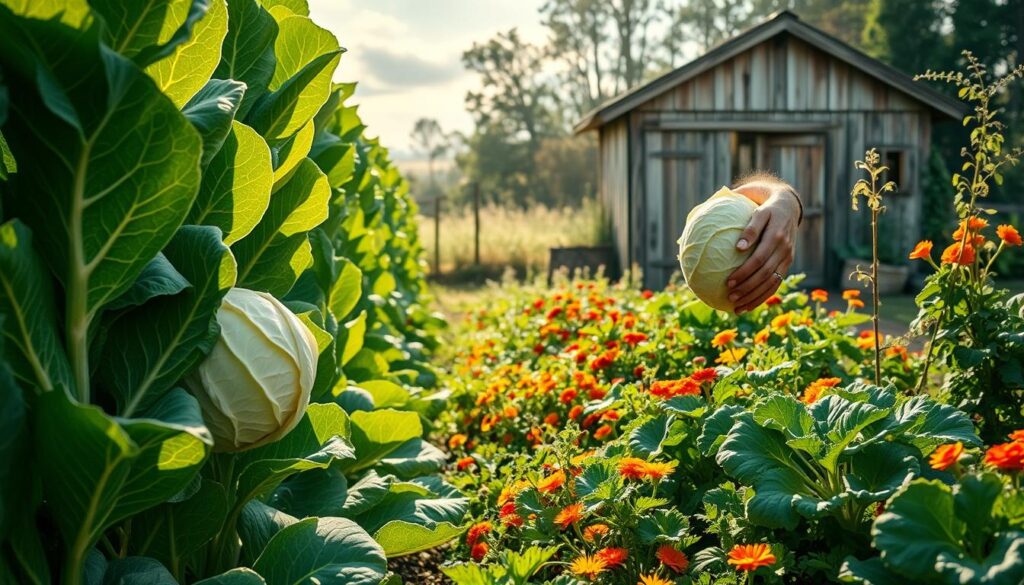
Recipes Featuring Cabbage
Cabbage stands out as a versatile ingredient in your kitchen, suited for numerous dishes. Simple cabbage recipes can transform this humble vegetable into a star on your dining table. You can enjoy cabbage in fresh salads, tangy slaws, warm stir-fries, or even stuffed rolls. Each dish offers unique flavors and nutritional benefits.
Simple Dish Ideas with Fresh Cabbage
Begin your culinary journey by preparing a refreshing cabbage slaw. Combine finely shredded cabbage with julienned carrots and a zesty vinaigrette for a quick side that complements any meal. This dish showcases how easy and rewarding cooking with cabbage can be, making it a staple for casual gatherings or special occasions.
Incorporating Companion Plants into Meals
Enhancing your cabbage recipes with companion plants can elevate your dishes. Consider adding freshly chopped dill or thyme from your garden to your meals. The addition of garlic or onion, both companions to cabbage, can further enrich the flavors in stir-fries or stuffed cabbage rolls. The fusion of these fresh ingredients promotes not only delightful taste but also nutritional enhancements.
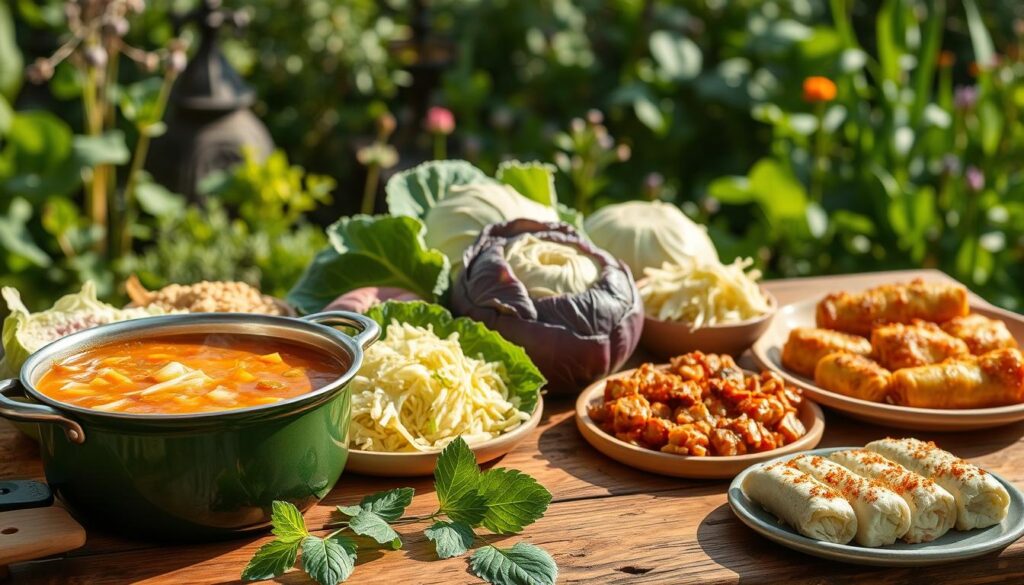
| Dish | Main Ingredients | Flavor Enhancers |
|---|---|---|
| Cabbage Slaw | Cabbage, carrots | Vinaigrette dressing |
| Stir-Fried Cabbage | Cabbage, bell peppers | Garlic, onion |
| Stuffed Cabbage Rolls | Cabbage, ground meat | Herbs (dill, thyme) |
Utilizing herbs from your garden can create memorable meals while maximizing the benefits of companion planting. Variety in your cabbage recipes leads to a more enjoyable and healthy dining experience.
Gardening Tools You Need for Cabbage
To grow healthy cabbages, it is essential to equip yourself with the right tools. Using quality cabbage gardening tools can significantly enhance your gardening experience. You will find that specific tools make tasks easier and more efficient, leading to a thriving garden.
Essential Tools for Effective Gardening
When cultivating cabbages, some essential gardening supplies will greatly assist you:
- Hand Trowel: Perfect for digging, transplanting, and aerating soil.
- Gardening Gloves: Protect your hands while providing a better grip.
- Pruning Shears: Ideal for trimming, shaping plants, and removing dead leaves.
Specialized Tools for Companion Planting
In addition to basic gardening tools, consider specialized tools for companion planting that focus on promoting healthy interactions among plants:
- Row Covers: Safeguard against pests while allowing light and moisture to reach your plants.
- Seed Trays: Facilitate planting small seeds, ensuring even spacing and healthy root development.
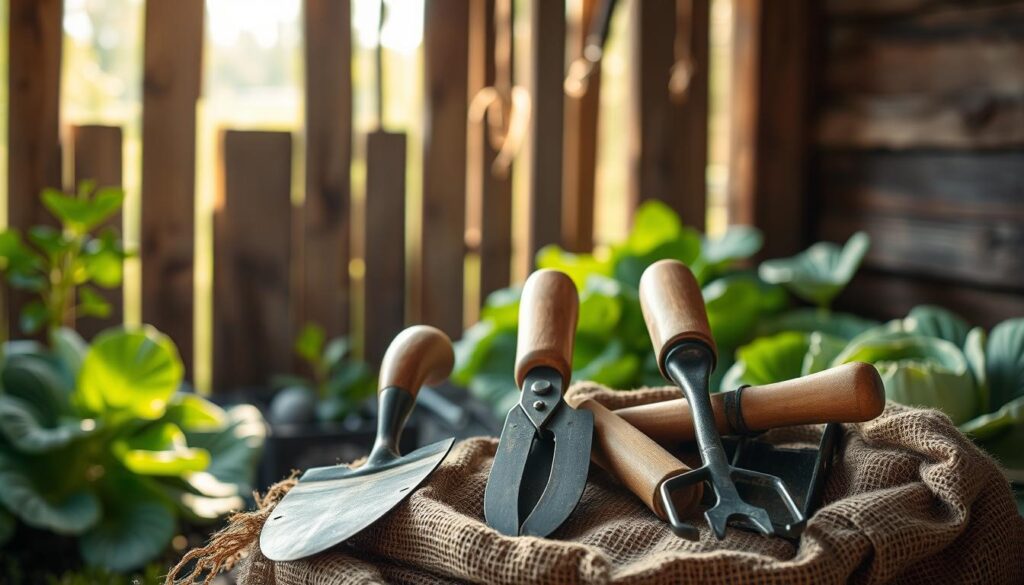
Community and Online Resources
Connecting with local gardening communities can greatly enrich your gardening experience. These groups offer opportunities for networking with gardeners who share your interests and challenges. By engaging with other local enthusiasts, you gain insights into effective planting strategies and unique ways to enhance companion planting. Workshops and organized events often hosted by these communities help you refine your skills while fostering a sense of camaraderie among gardeners.
Connecting with Local Gardening Groups
Membership in local gardening groups provides you with a wealth of knowledge. You can exchange tips about what works best in your specific region. Many experienced gardeners are eager to share their trials and successes, making it easier for you to navigate your own gardening journey. These connections can lead to friendships and collaborations, enriching your gardening adventures.
Utilizing Online Gardening Communities
In addition to local groups, online gardening resources are invaluable for anyone looking to expand their gardening knowledge. Digital gardening forums allow for networking with gardeners from different backgrounds, sharing experiences, and seeking advice. Websites dedicated to gardening offer practical tools, including garden planners that help you track your companion planting progress. Engaging in these online spaces enhances your understanding of the gardening world and allows you to stay updated on current trends.

FAQs About Cabbage Companion Plants
Gardening can stir up many questions, particularly when it comes to cabbage companion plants. Addressing these cabbage gardening questions can help clarify essential concepts and enhance your gardening experience. Many gardeners wonder about the compatibility of specific plants, the ideal growing conditions, and effective pest management strategies.
Common Questions Answered
Some common cabbage gardening questions you may have include:
- What are the best plants to pair with cabbage?
- Which plants should be avoided due to incompatibility?
- What are the ideal growing conditions for cabbage and its companions?
- How can companion planting help reduce pest issues?
Tips for New Gardeners
If you’re new to gardening, consider starting small with your cabbage planting endeavors. Focusing on a handful of well-chosen companion plants can lead to a productive and enjoyable gardening experience. Exploring local conditions can significantly influence your success. You can bolster your understanding of companion planting queries by seeking guidance from seasoned gardeners. Learning from their experiences can help you navigate the challenges you may encounter.
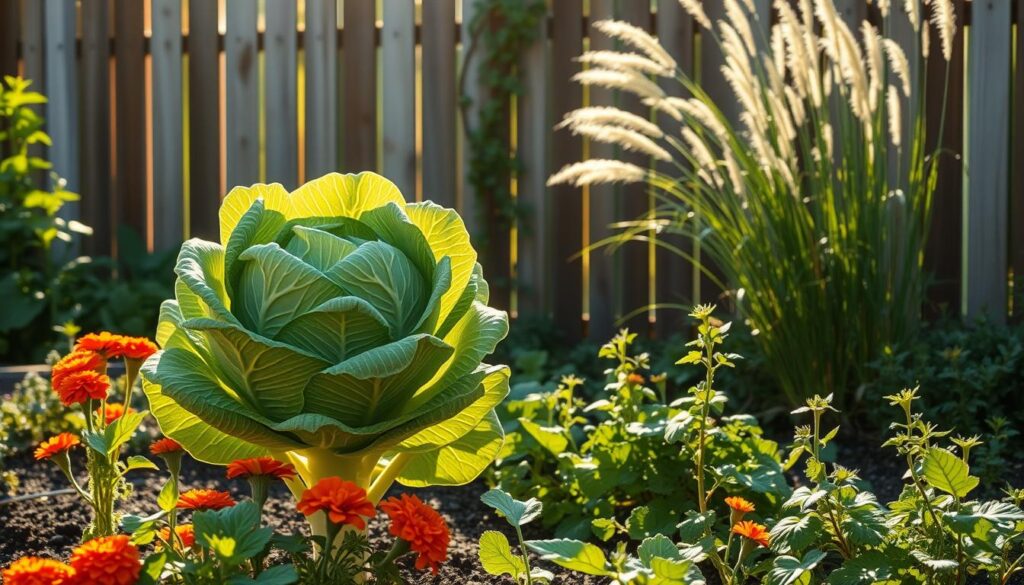
Conclusion: Growing Your Best Garden Yet
As you embark on your journey into the world of cabbage gardening, this article has provided a comprehensive summary of cabbage growing, emphasizing the undeniable benefits of companion plants. From selecting the right herbs and flowers to crucial planting techniques, every detail contributes to a thriving garden. Remember, companions do more than just coexist; they enhance the growth and health of your cabbage, ensuring a bountiful harvest.
Now is the perfect time to put this knowledge into action. With the strategies shared here, you can confidently start planting your cabbage companions and create a vibrant garden space. Embrace your gardening passion and cultivate not only delicious crops but also a rewarding hobby. You are well-equipped to nurture a thriving environment that produces fantastic results.
